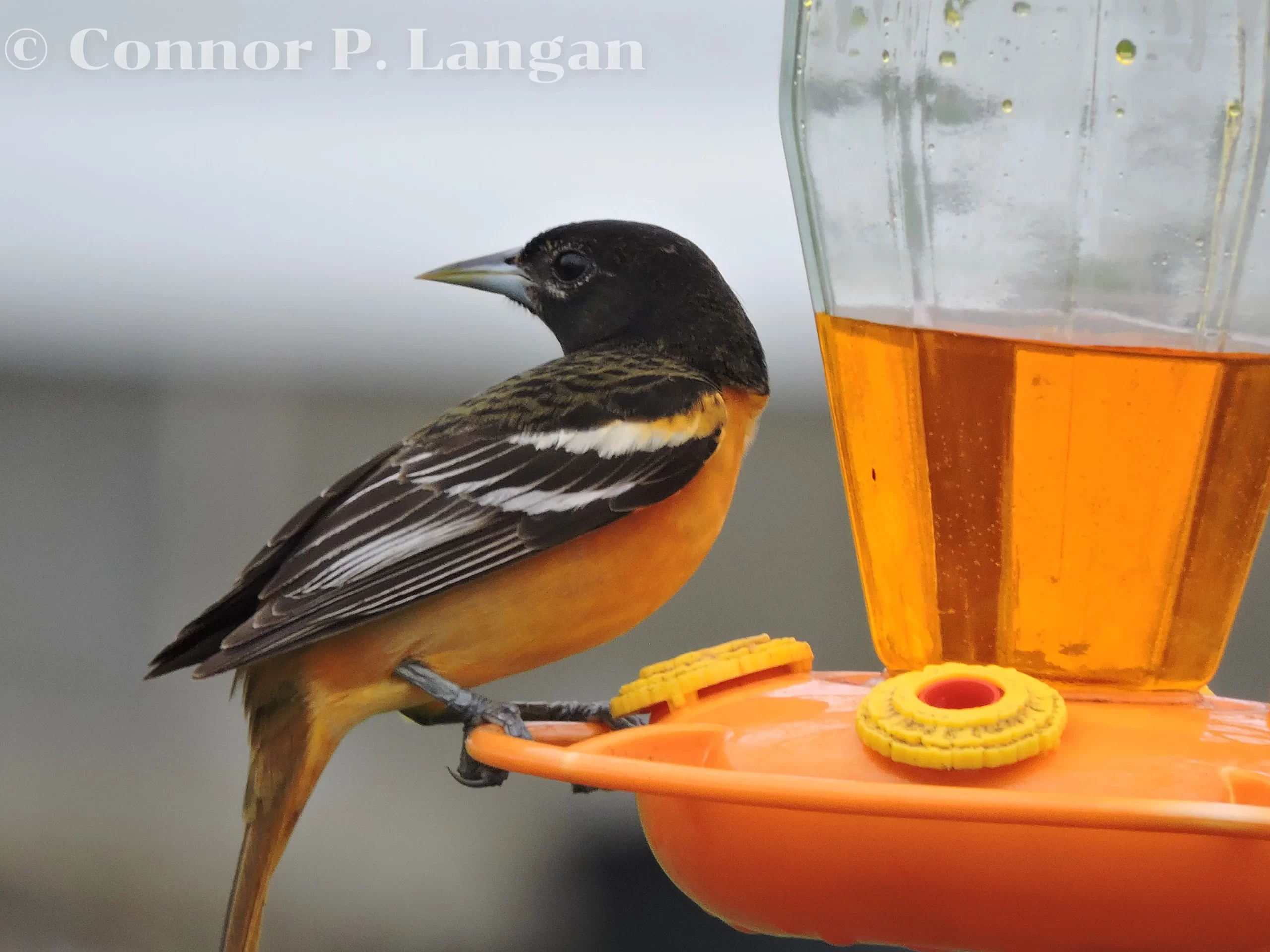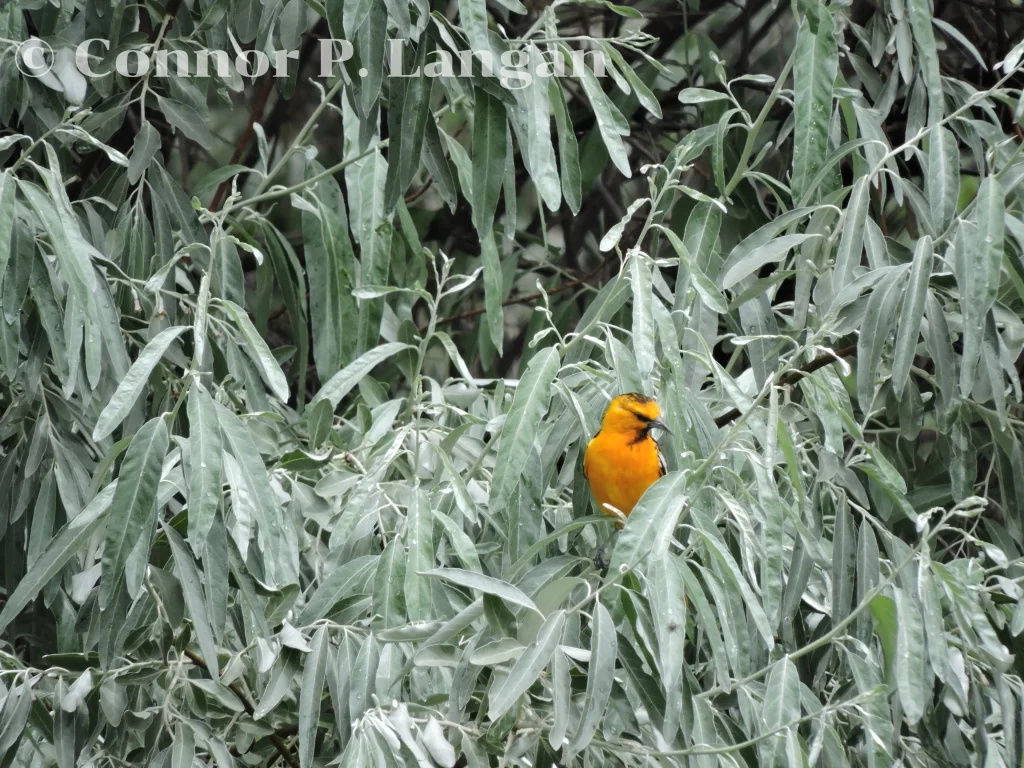Description
- Baltimore Orioles are among the best-known songbirds in eastern North America. These blackbirds have medium-length tails and long, fairly thin beaks.
- These birds measure 6.7 to 7.5 inches in length, while they weigh just over 1 ounce.
- Male Baltimore Orioles are orange below and black on top. The black wings of males have several white stripes, and the head is entirely black.
- Female Baltimore Orioles are a richer orange coloration compared to males. Though females are orange below like males, their heads can be orange as well. However, females can also have black or brown-colored heads. Female Baltimore Orioles have gray backs and wings. Their wings have white stripes that are similar to those of males.
- Immature female Baltimore Orioles can have a greenish wash to their heads and chests. Additionally, immature females may have lighter gray backs than adult females.
- Immature male Baltimore Orioles tend to look similar to adult females.
Behavior
- Baltimore Orioles are curious, nimble birds that can quite adaptable. These birds can be observed swiftly navigating through tree branches in search of food. Baltimore Orioles also are known to dangle upside down as they check the undersides of leaves in trees or shrubs.
- These blackbirds are quite accepting of other orioles. During the breeding season, Baltimore Orioles will not act territorial unless another bird is right next to a nest.
Diet
- Baltimore Orioles consume a diet that is centered around three primary food groups: insects, nectar, and fruit.
- During the breeding season, Baltimore Orioles tend to consume insects as the primary component of their diets. They do this because insects are readily available and they rely on these creatures to help their nestlings grow quickly.
- In the nonbreeding season, nectar and fruit may be more widely available than insects. Moreover, these food items can be efficiently converted to fat to fuel the migratory journeys of this species.
Habitat
- Baltimore Orioles seek out tracts of open woodland for nesting. These birds may nest in shelterbelts, parks, cemeteries, suburban neighborhoods, and other areas in which trees are not too densely concentrated. Look for Baltimore Orioles in similar habitats during migration.
- Additionally, these birds survive in similar habitats in the nonbreeding season. Baltimore Orioles may seek out coffee or fruit plantations during winter.
Range
- Baltimore Orioles breed in Eastern North America and throughout much of the Great Plains.
- These blackbirds winter in Florida, Mexico, the Caribbean, Central America, and northern South America.
Breeding
- Baltimore Orioles are seemingly socially monogamous, with birds finding new mates every year.
- After a male and female have formed a pair bond, the male does not assist with the construction of the nest. Instead, the female is left to do all of the work. Female Baltimore Orioles build their nests high in some sort of deciduous tree.
- Baltimore Orioles are tremendously intricate. Females weave together materials such as grass and plant stems to create a nest that is reminiscent of a hanging basket. Nests dangle from a fork in a tree-this is made possible by the females creating a makeshift knot that ties plant fibers to the tree branches. It usually takes a female around 1 week to build her nest, but it can take longer than 2 weeks if poor weather delays building.
- Baltimore Orioles tend to have a single brood of eggs each year. Clutches contain 3 to 7 eggs that hatch after close to 2 weeks. Following another 11 to 14 days, the nestlings leave the nest.
Backyard Birding
- Baltimore Orioles are one of the most exciting backyard birds in eastern North America. Grape jelly feeders and halved oranges are put out in backyards specifically to attract these birds, and these items usually work quite well.
- Baltimore Orioles can be shy, but their curiosity and hunger often prevail and lead them to make repeated trips to feeders to fatten up during migration.
Population Status
- Though Baltimore Orioles have a total population of more than 12 million, these birds have lost more than 35% of their total population in the last half-century.


